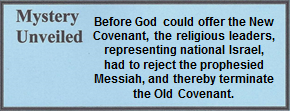15.03.05 Lk. 22:54 (See also Mt. 26:57-58; Mk. 14:53-54 Jn. 18:18-24) Second Jewish Trial
TO CAIAPHAS THE HIGH PRIEST
They seized Him, led Him away, and brought Him into the high priest’s house. Meanwhile Peter was following at a distance.
Now, before Caiaphas, there was a notable change in His speech. Jesus was not defending Himself, but rather, was making a series of “I” statements such as “I am,” “I always taught,” and “I said.” With calm meekness He answered His accusers so they might know, without a doubt, His identity – in doing so, Jesus extended mercy to them and showed that He was their Messiah.
It was a busy night for the Sadducees to do their work of execution. Following the first trial came a speedy second one to insure that His popular followers could not demand His freedom. Some scholars have questioned whether Caiaphas was the central figure who desired Jesus dead or if he simply did the dirty work for Annas. However, since Caiaphas held the official office, he was primarily responsible for the direction and decisions of the Sanhedrin.
15.03.05.Q1 What is the significance of the Jewish leadership condemning Jesus?
The significance lies in the covenant God had with His people. (Technically, the Romans crucified Jesus, but did so at the insistence of the Jews.) In the Old Testament days, God established His covenant with the nation of Israel, whereas the new covenant is not with a nation, but with individuals in many nations. The life of Jesus was entirely within the Old Testament setting. The New Testament era did not begin until after the resurrection (some believe it was on the Day of Pentecost). Before the New Covenant/New Testament could be enacted, God permitted the religious leaders, representing national Israel, to reject Him as their Messiah. God, knowing the wicked hearts of the Sadducean and Pharisaic leadership, closed the Old Covenant, permitted the destruction of His temple to end the sacrificial system, and spread the good news that the New Covenant was available to anyone who desired it.
The Romans permitted the Jews to maintain their own temple military unit and religious judicial system. Hence, the Sadducees had the authority to arrest and detain anyone in the restricted areas of the temple and areas around it. However, capital punishment was reserved for the Roman courts, except in the event a Gentile entered the restricted area of the temple.[1]

[1]. Farrar, Life of Christ. 415.